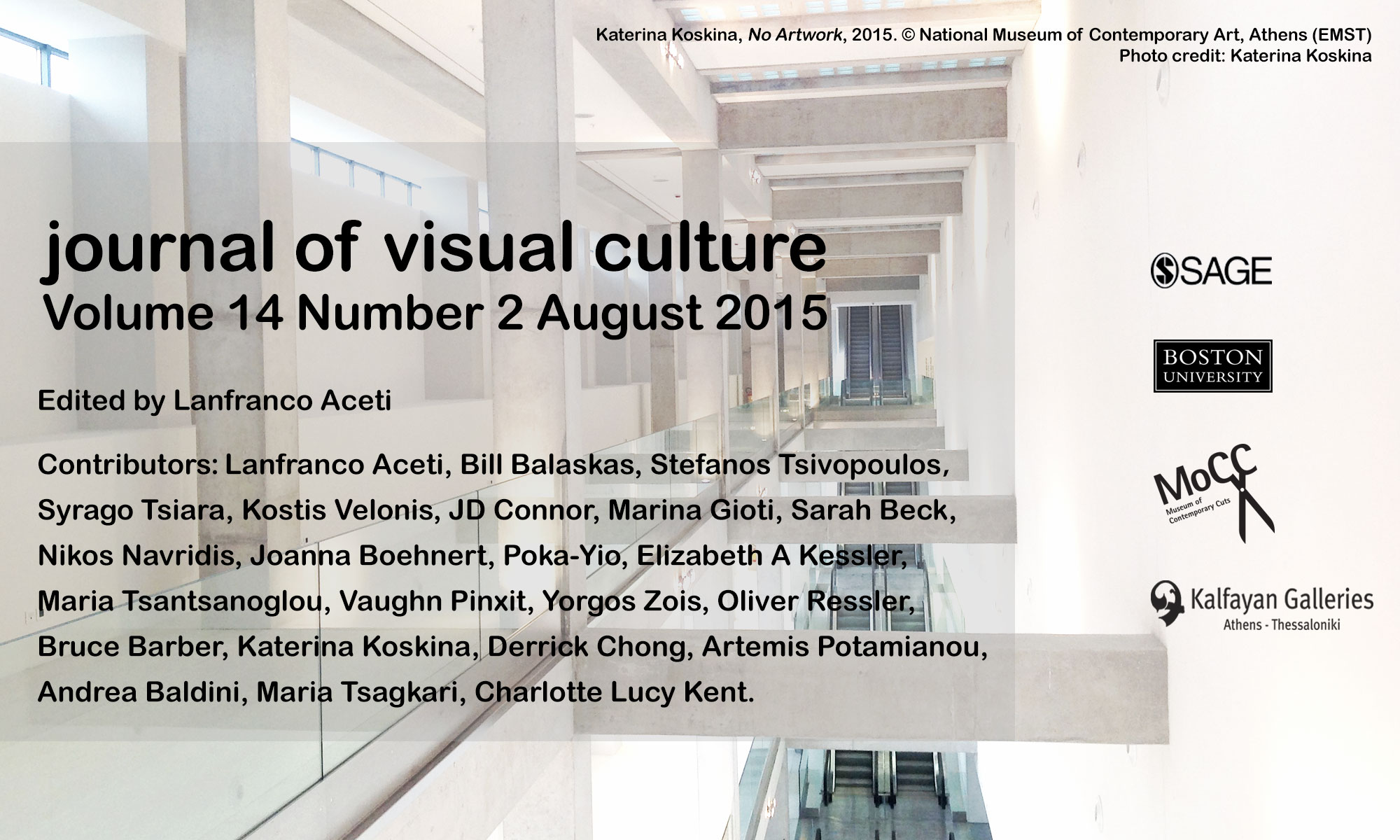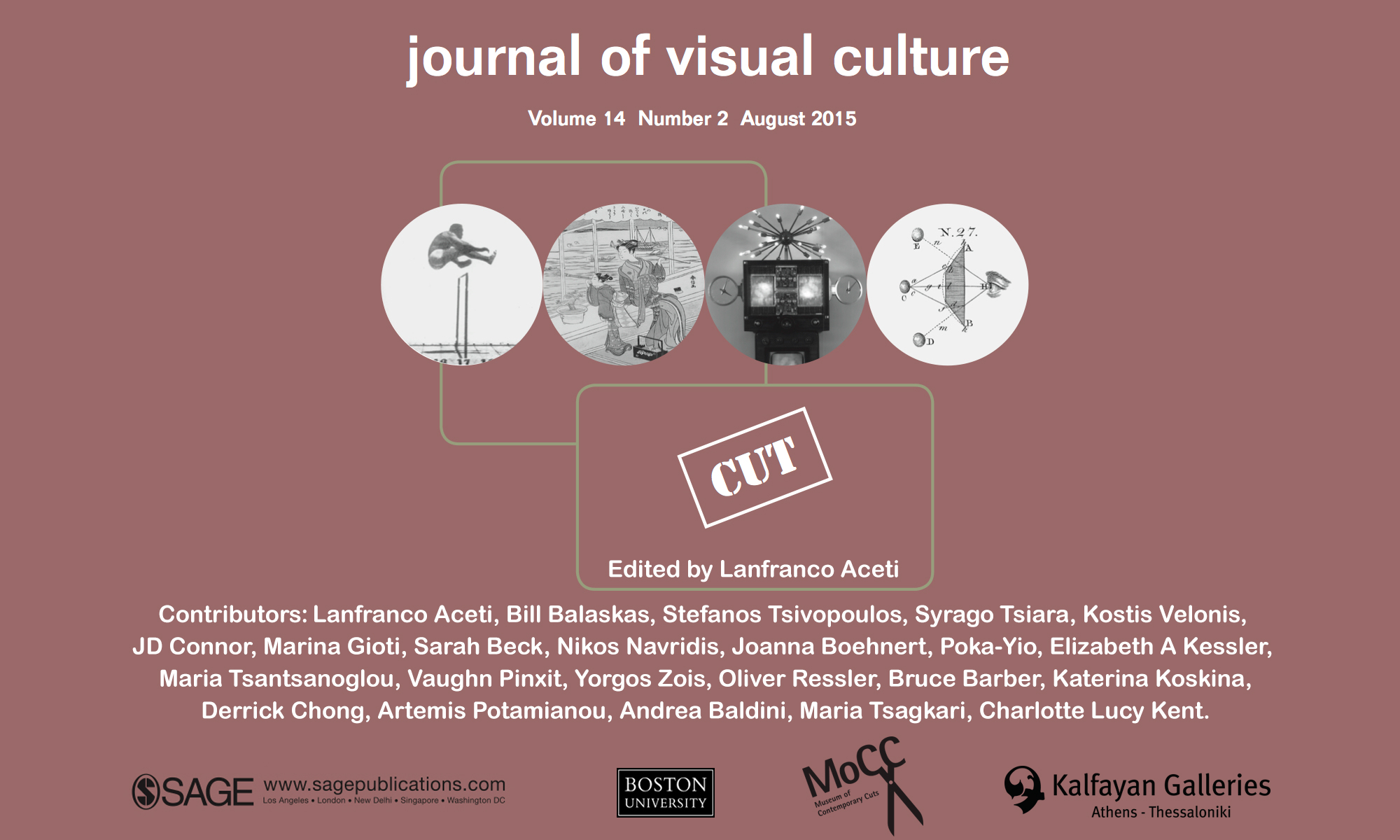CUT is the themed issue of Journal of Visual Culture. The issue is a collaboration with the Museum of Contemporary Cuts and is supported by Boston University and Kalfayan Galleries, Athens – Thessaloniki. International contributors provide a range of perspectives on the contemporary crisis and its results questioning how the arts and social structures are being affected by the financial cuts. Contributors come from a variety of academic, artistic and curatorial backgrounds: Lanfranco Aceti, Bill Balaskas, Stefanos Tsivopoulos, Syrago Tsiara, Kostis Velonis, JD Connor, Marina Gioti, Sarah Beck, Nikos Navridis, Joanna Boehnert, Poka-Yio, Elizabeth A Kessler, Maria Tsantsanoglou, Vaughn Pinxit, Yorgos Zois, Oliver Ressler, Bruce Barber, Katerina Koskina, Derrick Chong, Artemis Potamianou, Andrea Baldini, Maria Tsagkari, and Charlotte Lucy Kent.
The opinions, imaginary and visualizations of museum directors, artists, filmmakers, as well as academic and cultural commentators provide an insight in the problems that are arising and that are shaping, in Lanfranco Aceti’s words, the “relationships between art, money and power as indicators of the tensions of post-democracy, post-citizenship and the increasingly fraught representations of the cultural and social body.”
In the introduction to the issue Aceti wrote: “This themed issue poses questions concerning financial cuts and their impact on contemporary society and the arts. It presents a collection of perspectives, in particular from Greece, in order to examine artistic and aesthetic practices. It explores how society is being transformed into a post-democracy and how citizens are becoming post-citizens. These transformations will have implications in the redefinition of both post-democracy and post-citizenship as two oppositional forces, which may no longer be reconcilable and could lead to insurrectional and repressive politics. The role that art plays and will play in shaping these discourses by presenting alternative imaginaries to the narratives of the body politic will have to be evaluated in a context of aesthetic concurrence and conspiracy of art. But if the artists are transformed into post-citizens – it may be safe to assume that as post-artists their contributions will be more free – or totally freed – from the restraints and bonds of national and supranational institutions, leading de facto to the production of counter narratives and imaginaries that will be perceived by the post-democracies’ body politic as insurrectional art.”


